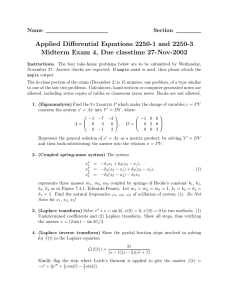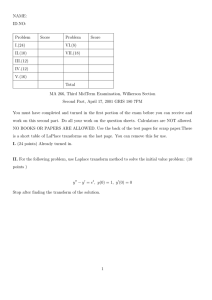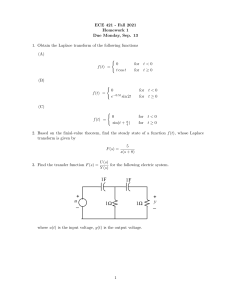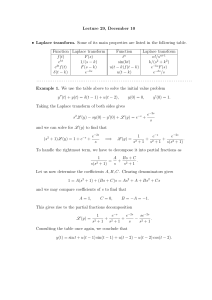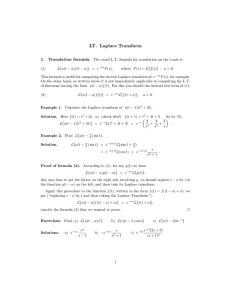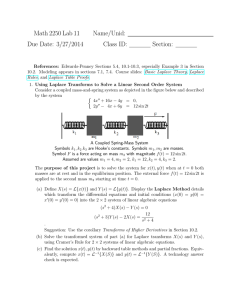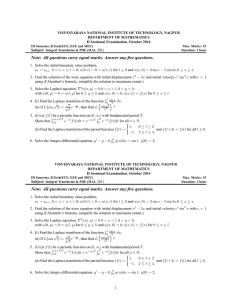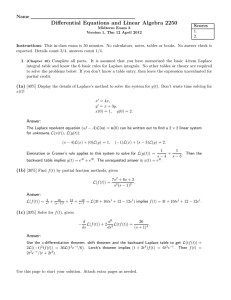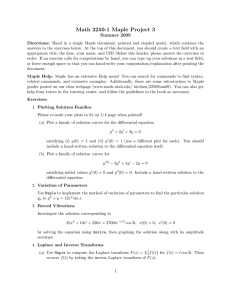Applied Differential Equations 2250-1 and 2250-2 Name Section
advertisement
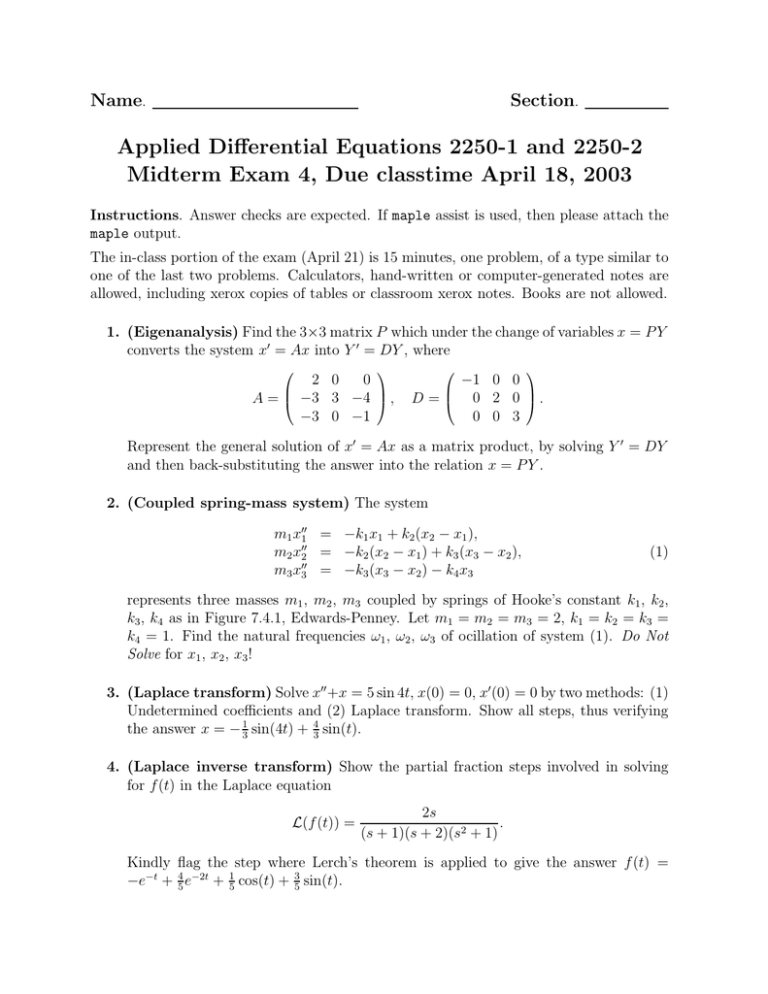
Name. Section. Applied Differential Equations 2250-1 and 2250-2 Midterm Exam 4, Due classtime April 18, 2003 Instructions. Answer checks are expected. If maple assist is used, then please attach the maple output. The in-class portion of the exam (April 21) is 15 minutes, one problem, of a type similar to one of the last two problems. Calculators, hand-written or computer-generated notes are allowed, including xerox copies of tables or classroom xerox notes. Books are not allowed. 1. (Eigenanalysis) Find the 3×3 matrix P which under the change of variables x = P Y converts the system x0 = Ax into Y 0 = DY , where 2 0 0 A = −3 3 −4 , −3 0 −1 −1 0 0 D = 0 2 0 . 0 0 3 Represent the general solution of x0 = Ax as a matrix product, by solving Y 0 = DY and then back-substituting the answer into the relation x = P Y . 2. (Coupled spring-mass system) The system m1 x001 = −k1 x1 + k2 (x2 − x1 ), m2 x002 = −k2 (x2 − x1 ) + k3 (x3 − x2 ), m3 x003 = −k3 (x3 − x2 ) − k4 x3 (1) represents three masses m1 , m2 , m3 coupled by springs of Hooke’s constant k1 , k2 , k3 , k4 as in Figure 7.4.1, Edwards-Penney. Let m1 = m2 = m3 = 2, k1 = k2 = k3 = k4 = 1. Find the natural frequencies ω1 , ω2 , ω3 of ocillation of system (1). Do Not Solve for x1 , x2 , x3 ! 3. (Laplace transform) Solve x00 +x = 5 sin 4t, x(0) = 0, x0 (0) = 0 by two methods: (1) Undetermined coefficients and (2) Laplace transform. Show all steps, thus verifying the answer x = − 31 sin(4t) + 43 sin(t). 4. (Laplace inverse transform) Show the partial fraction steps involved in solving for f (t) in the Laplace equation L(f (t)) = 2s . (s + 1)(s + 2)(s2 + 1) Kindly flag the step where Lerch’s theorem is applied to give the answer f (t) = −e−t + 54 e−2t + 15 cos(t) + 35 sin(t).
